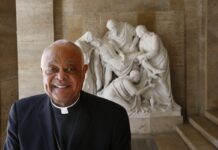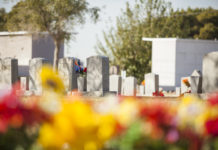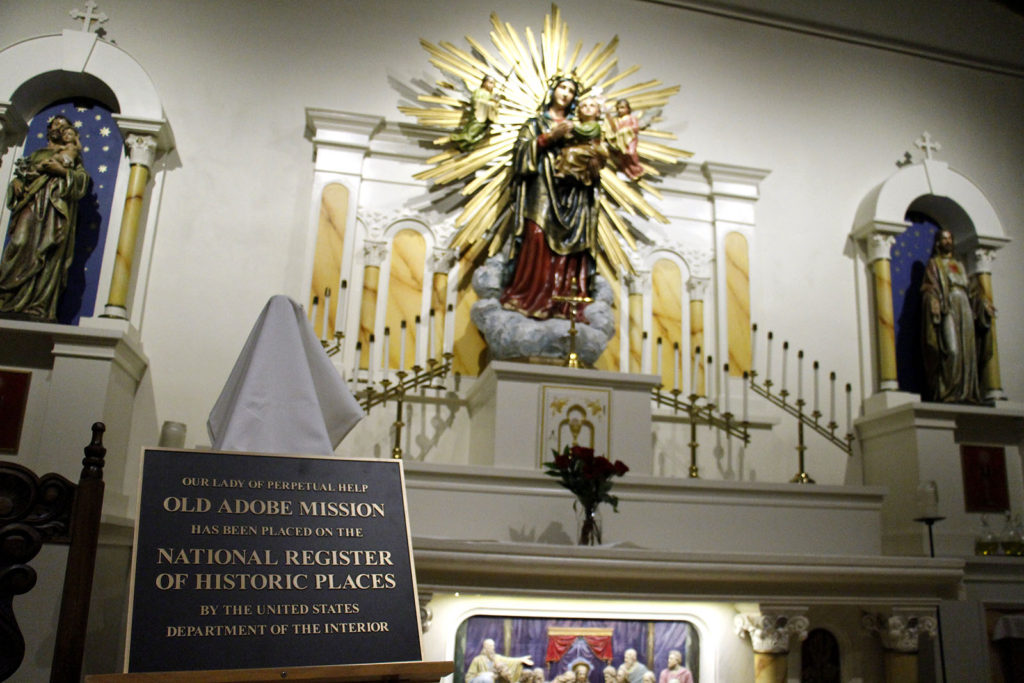
SCOTTSDALE — A hint of the mission’s advanced age is embedded in its name — the Old Adobe Mission. Now, the building, which served as the original Our Lady of Perpetual Help Church, has national acknowledgement that its architecture aged with grace and is always worth a visit.
The U.S. Department of the Interior added the Old Adobe Mission, 3817 N. Brown Ave., to its National Register of Historic Places. The official honor was announced last fall with a formal ceremony held at the mission Jan. 18 after a commemoration plaque was completed and seasonal volunteers had returned.
“It means everything. It gives worldwide exposure,” said Erne Kallen, Old Adobe Mission historian, of the new distinction.
Old Adobe Mission
3817 N. Brown Ave., Scottsdale
(480) 980-3628
Hours: 10 a.m.-5 p.m. daily (October-mid-May)
MORE INFORMATION
Not that global reach had been a challenge. A steady stream of visitors from every U.S. state and over a dozen countries in any given year — including every province in Canada one year — testified that the mission is something special. They write comments in the guestbook such as “serene,” “beautiful” and “peaceful.” Visitors offer up more donations today in memorial trinkets honoring the mission than they do through in the church’s stationary prayer candles. It was once the opposite.
The Old Adobe Mission is open to visitors October to mid-May.
“Our visitors are already up 30 percent from this time last year,” said Fr. Greg Schlarb, pastor of the current Our Lady of Perpetual Help, which oversees the mission. He hopes the national distinction might result in a slightly higher ranking when local newspapers rank “must see” places to visit in Scottsdale.
Even Don Ryden, a historic preservation architect who identified vital repairs when the first restoration began in 2003, said during brief remarks that harmony fills the room.
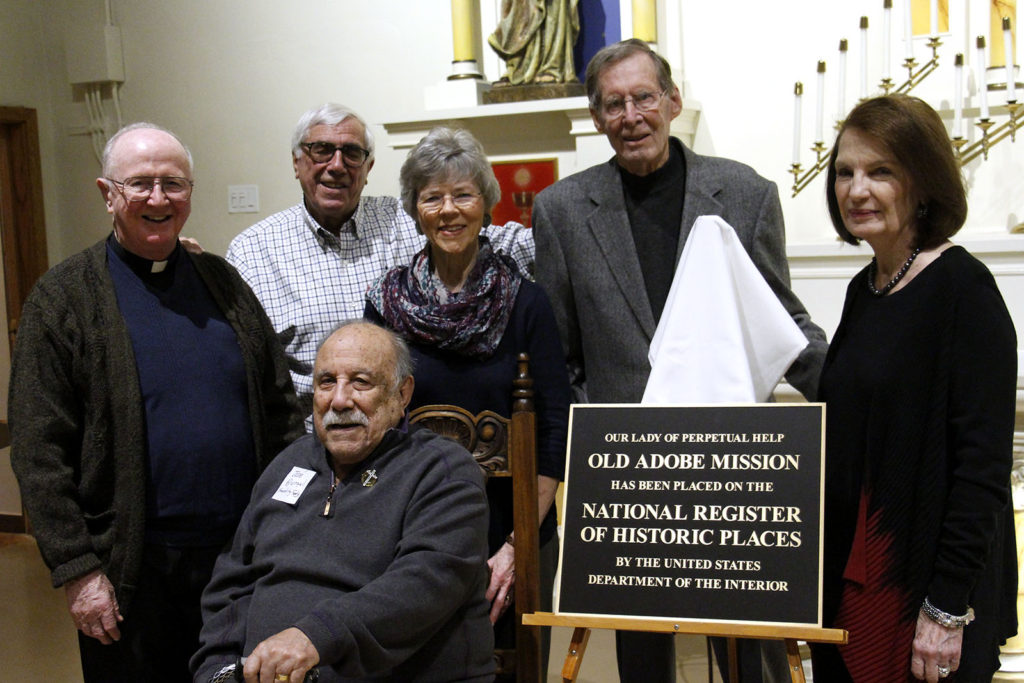
A more recent upgrade with a separate campaign beginning in 2014 added 1,200 square feet onto the back. “And you folks, are part of that wonderful, wonderful continuation,” Ryden told guests in attendance. Volunteer docents, members of the mission’s founding families and visitors were among them.
Now, a quality historic gallery further preserves mission history, one where Cruz Medina can see himself, literally. A photograph of him portraying Juan Diego in the early “Miracle of Roses” pageant is among the gallery’s collection. Medina, who now lives in Chandler, later on got to portray the bishop in the story.
He said preserving the mission is a way to help recall the parish’s origins. Medina made his first Communion at the mission in 1945 and was a member for another 15 years. His father did the plastering and installation of the adobe bricks.
The Old Adobe Mission is a handmade adobe church designed by Robert T. Evans and completed by a small community of Mexicans in 1933 who worked in nearby cotton fields and ranches. Visitors can still touch one of the adobe bricks. Two men made more than 4,000 of the 6,000-brick collection that made up the original church. Some weighed as much as 50 pounds.
The mission was the center of OLPH life until parishioners outgrew it in 1956 and moved to new, nearby land where the hub of parish life sits today. They can even sit on the last remaining original pew. Kallen, the mission’s historian, loves the fact that everything visitors touch was donated and has a story behind it. He or one of the docents would love to share it too.
The Old Adobe Mission has already seen more than 15,000 visitors since October when it re-opened for the season. Key leaders project 35,000-40,000 before it closes in May. Rad Masinelli, who oversees mission operations, wouldn’t be surprised if seasonal numbers climb to 100,000 visitors in a couple of years.
“This is such an iconic place in Old Town,” Masinelli said. “I always felt it was so special it needed to be on the national register.”
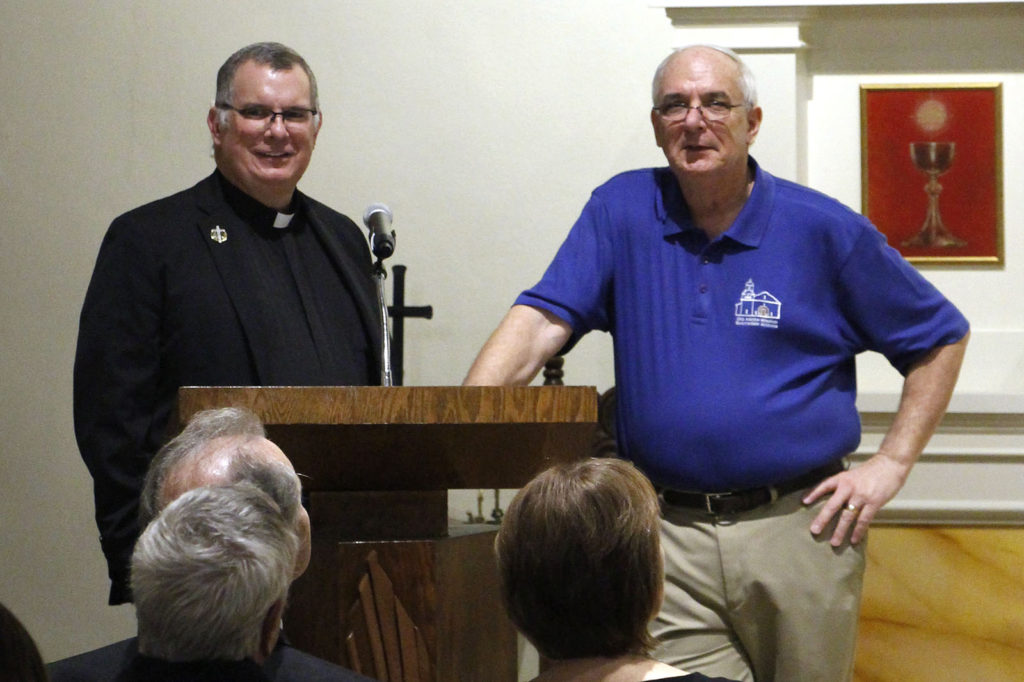
The Old Adobe Mission earned preservation distinctions at the city and state levels in 2014 and 2015, respectively. The Grand Canyon Chapter of the Daughters of the American Revolution placed an historical marker at the mission in 2015 as well.
Drawing upon key words that Catholics — many now members of OLPH — could relate to, Ryden, the architect, said, “The mission is to never cease because to keep our landmarks up … preservation requires perpetual help.”
The 85-year-old mission joins at least nine other Catholic sites across Arizona on the national register. That includes both Sacred Heart churches in the diocese — Phoenix and Prescott, the Chapel of the Holy Cross in Sedona, St. Mary’s Basilica in downtown Phoenix, the old St. Mary’s Church at Mary College in Tempe and Our Lady of Mount Carmel in Tempe.




